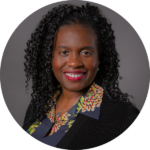The 2023 America’s Health Rankings® Senior Report, published by United Health Foundation, is filled with interesting data points about the current state of our 65-and-older population.
The Senior Report highlights some positives for aging Americans. Specifically:
- A per capita increase in geriatric providers and home health care workers
- A decrease in food insecurity
- An increase in high-speed internet access
But the report also reveals stagnant and negative trends, including persistent disparities, early death rate increases and climbing rates of polychronic conditions.
naviHealth Vice President for Medical Affairs Dr. Melissa Urrea and Executive Medical Director Dr. Curtis Mock share their three key takeaways and provide a glimpse into what the future of being a senior looks like.
1. We’ve made strides, but there’s work to do to improve senior well-being.
Given what the report tells us about access and isolation, Dr. Urrea says additional work is especially needed.

Vice President for Medical Affairs
naviHealth

Executive Medical Director
naviHealth
“There’s good and bad news regarding access and isolation,” Dr. Urrea says. “The good news — for now and the future — is that we saw a 7% increase in high-speed internet access. This connectivity helps seniors reach out not only to health care providers but also to friends and family — it can reduce feelings of isolation.
“We also saw an increase in the number of geriatric care providers and personal and home health workers. But, at the same time, we saw a decrease in senior centers per capita.”
Dr. Urrea says isolation is a gateway to stressors seniorsface, like poverty and inadequate housing.
“If we can address access and isolation, other solutions fall into place. Giving seniors a community where they can connect and find the resources they need is crucial to their well-being.”
Dr. Mock says the access and isolation concerns raised by the report stand out, but he’s also focused on the not-yet-visible challenges ahead.
“Propping up our economy and providing extra pandemic support undoubtedly helped our senior population,” Dr. Mock says. “But they’re now faced with economic challenges like rising prices and the end of government programs that helped with food coverage. Not having family support may leave seniors without the financial means to secure food and other essentials.”
2. Home care is essential health care. And it may look different than we expect.
Both Dr. Mock and Dr. Urrea agree that health care is changing. Their team is already working to increase access to home health care and smooth care transitions. But there’s more to be done.
“We have almost 60 million Americans over 65 who will need tailored care, so we have to ask ourselves how we’ll deliver it,” Dr. Urrea says. “We don’t have enough health care facilities to meet everyone’s needs. And people want to stay in their homes. So we need to think about how to make homes better.”
Improving homes, she says, could mean looking at things from a safety and design perspective. But it also may mean re-thinking multigenerational living.
The U.S. Census Bureau reports that millennials (ages 25 to 40) live at their parents’ homes at rates not seen since the early 1970s.
“Having a tech-savvy younger generation taking a vested interest in the well-being of older relatives could be a good thing,” Dr. Urrea says. “What’s feasible and workable financially for American families could also be a low-cost solution to help address isolation and access.”
Dr. Mock says it’s also important not to overlook community resources as a path to better health at home.
“Community resources are invaluable,” Dr. Mock says. “A patient may spend 10% of their life in a hospital, but 90% elsewhere. Community resources can help to incentivize people to take an active role in their health care. It just takes one person willing to help someone to change health care for the better.”
3. Knowledge is power.
“Reports like these give us a better understanding of some of the challenges seniors face,” Dr. Urrea says. “When we can give those challenges names, we can start to make changes designed to improve people’s lives.”
Dr. Urrea says it’s also important to remember that many factors facing seniors will also impact the younger population.
“Isolation, for example, isn’t limited to our seniors. Neither are financial concerns. Many people are feeling the pinch. If we can make improvements for our seniors — our largest growing population — we can also fix things for younger generations.”



